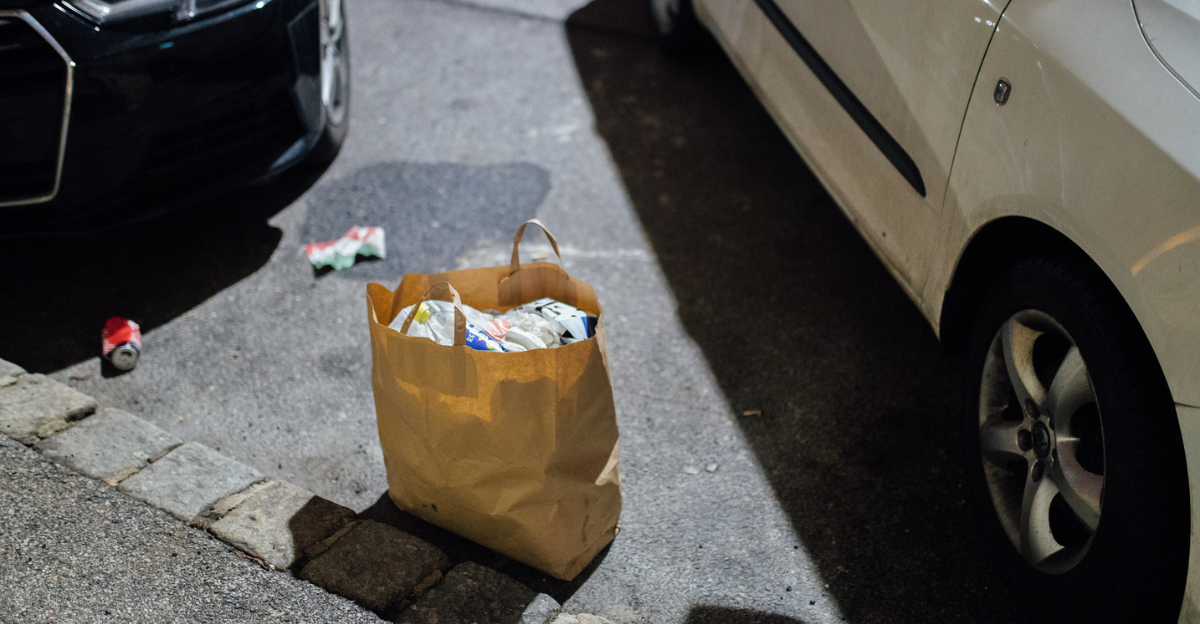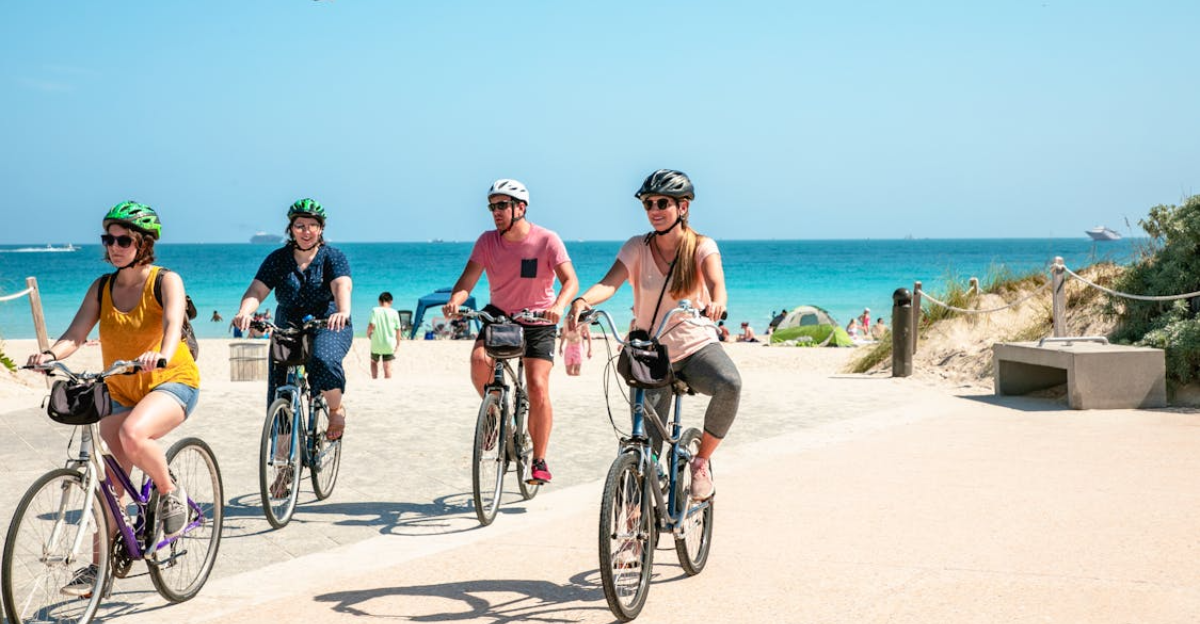
The tourism industry accounts for approximately 8% of global greenhouse gas emissions, thereby contributing to global warming and climate change. The traditional way of traveling puts a strain on the environment by contributing to pollution, habitat destruction, and climate change. In recent times, travelers have become more mindful of their travel habits and destinations. Sustainable travel is about reducing the negative economic, social, and environmental impact of tourism. Are you looking for ways to explore the world while being mindful to protect it? Here are 19 essential tips for traveling sustainably.
1. Eco-Friendly Transportation

There could be bad effects on the environment from transportation, such as greenhouse gas emissions, noise pollution, and more. Always choose an eco-friendly means of transport, like a train, which is suitable for long distances, especially those that use renewable energy. Other options are buses or shared rides, which reduce gas emissions and traffic congestion as there will be fewer vehicles on the road. Flights are known for massive carbon emissions, so always choose a direct flight when possible because they use less fuel.
2. Go For Green Accommodations

When you travel, you should stay in places that are good for the environment. To make this easier, look for hotels or lodges that have LEED or Green Key certification. They save electricity and water, and they reduce waste production. They also use materials that are good for the environment. You should also consider booking locally-owned accommodations to support local businesses, which makes sure you are giving back to the community and contributing to economic sustainability.
3. Pack Light and Smart

Did you know that the more you pack and the heavier your luggage, the more fuel your transportation will use? So, pack what is necessary. When it comes to clothing, firstly choose clothing that is made from materials that are good for the environment, and only pack a few items that can be styled in different ways and used for a number of occasions.
4. Take a Reusable Water Bottle Along

You would be saving our environment if you invested in a stainless steel or BPA-free reusable water bottle. This way, you do not have to purchase disposable water bottles, which will also help you save money. Most airports and cities now have clean refill stations, so staying hydrated won’t be an issue.
5. Support Local Businesses

When you go to a new place, eat at the local restaurants and shop at the local stores. This helps the economy and society stay strong by producing jobs and helping small businesses grow. It also promotes the community’s sense of identity and cultural legacy, which helps the people in the area live better lives.
6. Avoid Single-Use Plastics

Single-use plastics are harming our environment by contributing to pollution and impacting climate change. So take along your own cutlery sets, carry your cloth shopping bag and reusable containers, and refrain from using straws; if you must use one, then carry along a travel-size reusable one.
7. Travel Outside of Peak Season

Another way to travel sustainably is to visit destinations, especially the popular ones, during their off-season. You benefit from lower prices, cheaper flights, cheaper hotels, and more. There are also fewer crowds and less strain on local resources. As a result, you have a more relaxed experience.
8. Respect Local Wildlife

You are free to enjoy ethical wildlife tours that help with animal conservation, but make it a point to avoid certain wildlife interactions like rides on elephants or tigers, or photoshoots with wildlife. You could be indirectly aiding animal abuse because these animals go through violent training methods to make them submissive to be used for these interactions.
9. Slow Travel

When you spend more time in one destination rather than frantically exploring, the area has positive impacts on the environment, like reducing your environmental footprint and encouraging you to support local economies, which is good for economic sustainability. It also allows you to have a meaningful travel experience.
10. Conserve Water and Energy

In some destinations, clean water and reliable energy are limited, and it is quite a struggle for locals to have sustained access to these. So, do your part to make sure you do not waste these resources. Turn off lights and all other electronic devices when they are not in use, and consider taking quick showers.
11. Carbon Offsetting

Sometimes it is unavoidable to avoid flying or taking a flight with high carbon emissions. In these situations, you can donate to projects that either remove carbon dioxide from the atmosphere or prevent future emissions. This is carbon offsetting, and some of the projects include reforestation, renewable energy, or methane capture. It doesn’t completely erase emissions, but it is a way to help you take responsibility for unavoidable travel.
12. Eat Plant-Based Foods When Possible

The production of meat and dairy releases large amounts of methane and carbon dioxide, raising animals requires a vast land and huge amounts of water, and animals also generate waste that can pollute soil and water. Whereas plant-based foods release fewer emissions and require less land and resources. So, to help save the environment, you can occasionally opt for plant-based foods.
13. Respect Local Customs

When you travel to a new place, try to learn their culture, their customs, and etiquette, and respect them. It helps them feel valued and proud of their tradition. When you show respect, they are more likely to respond warmly, and this gives you a great tourism experience. This promotes social sustainability.
14. Reduce Digital Waste

Data centers are a major source of emissions, so you can help by reducing energy consumption by avoiding streaming, uploading, or cloud syncing. You can be mindful of your digital habits by downloading content in advance and limiting unnecessary uploads while traveling.
15. Carry a Litter Bag Along

Whenever you visit a place, aim to leave it as you found it or even better. Always collect every piece of your trash in a litter bag and dispose of it properly. Litter harms wildlife, pollutes landscapes, and can end up in water bodies. Even if it’s not yours, pick it up for the planet.
16. Walk or Use a Bike Whenever You Can

When you get to your travel destination, walking is a great way to explore the area. It gives you the chance to fully experience the place without harming the environment. For locations that are too far to get to on foot, renting a bicycle, if available, also helps keep your carbon footprint low.
17. Use Tour Companies That Operate Sustainably

It is important to use tour companies that prioritize sustainability. Find out how they give back to the local communities and how they handle wildlife encounters. Make sure they are actually doing the work to be sustainable and not just creating a perception that they are protecting the environment.
18. Advocate for Sustainable Travel Practices

Your knowledge and your voice are your power. Share everything you have learnt about sustainable tourism and your experiences with it to encourage others to follow suit.
19. Reflect on Your Experience

After your travels, sit back and reflect on your experience. The places you visited, the people you met, and how the sustainable choices made you feel. Think about how you can continue to make a positive change in the world.
